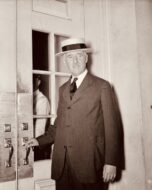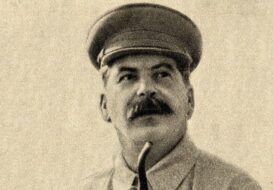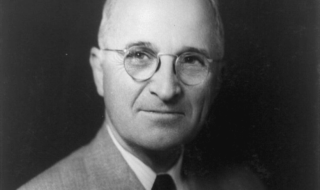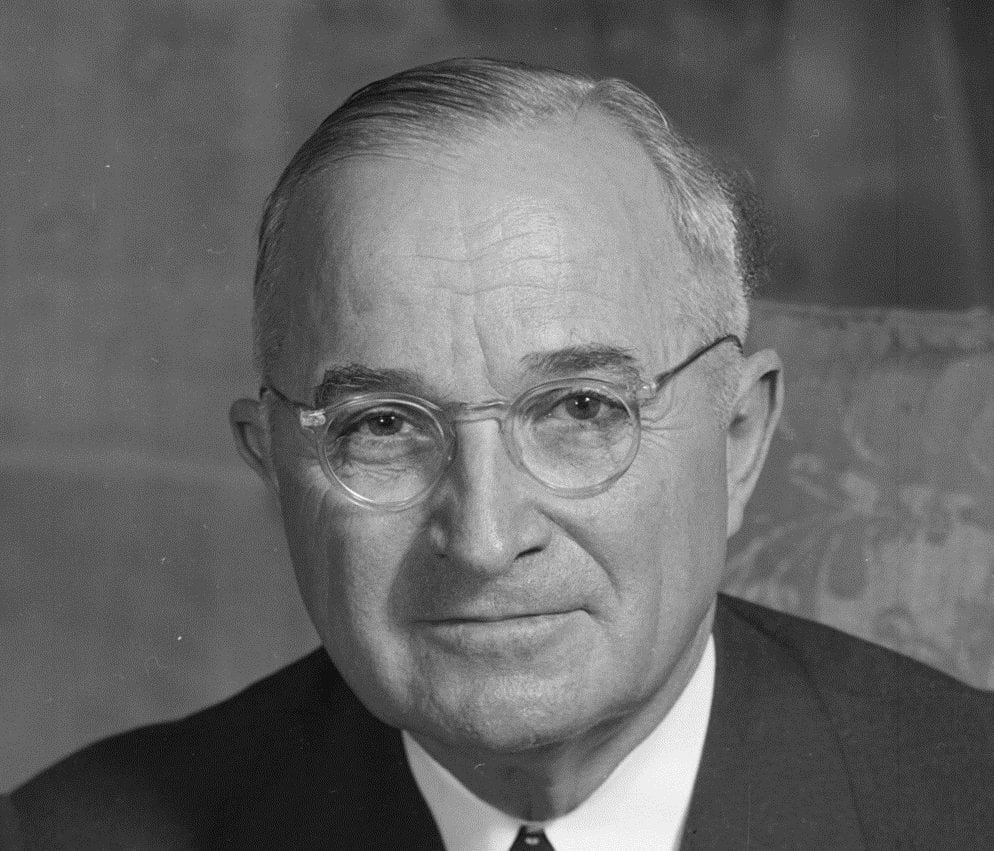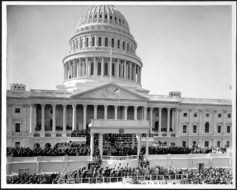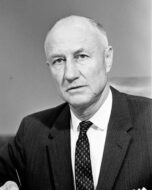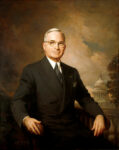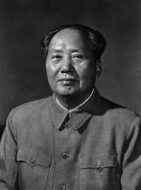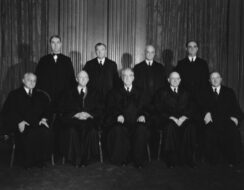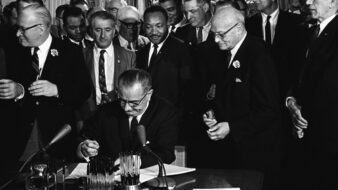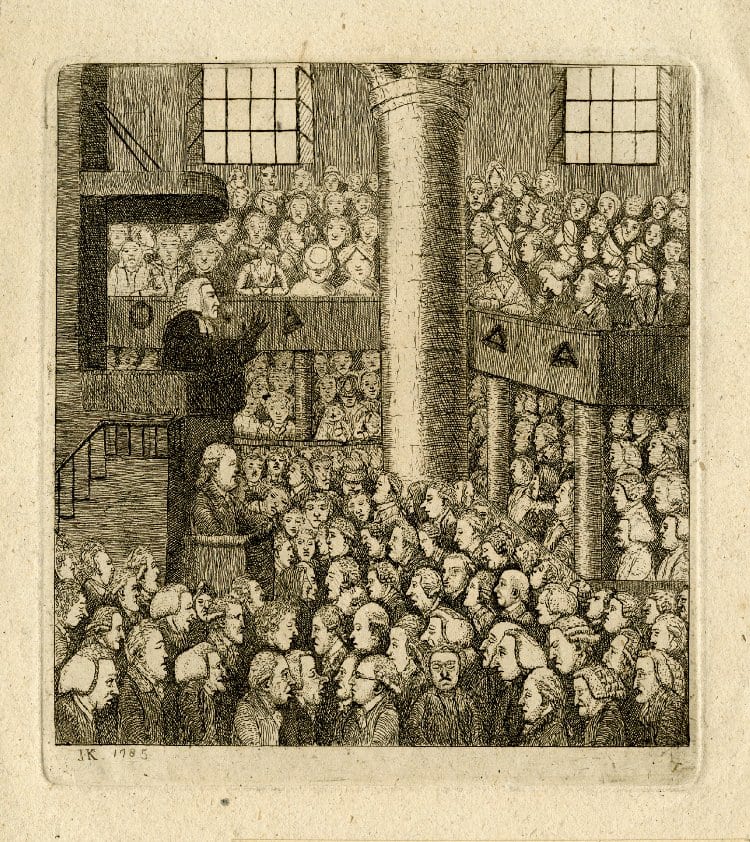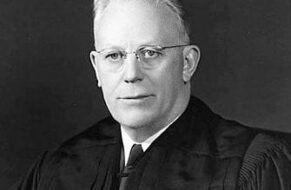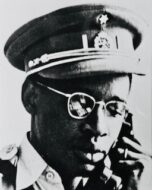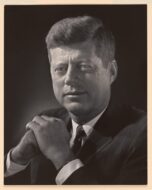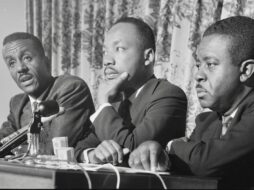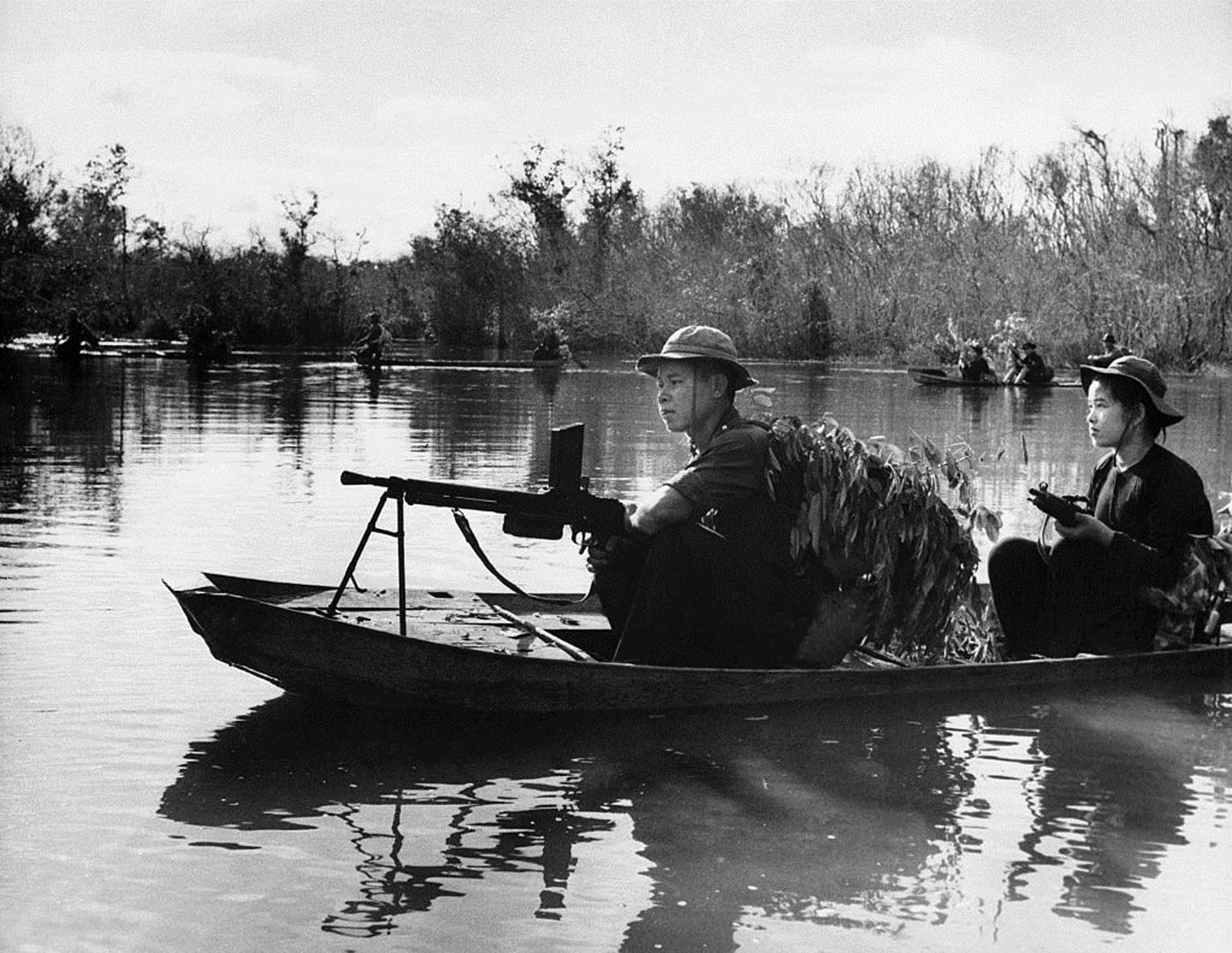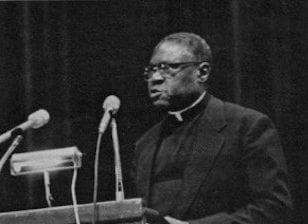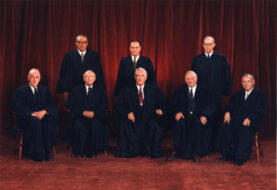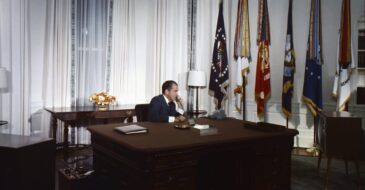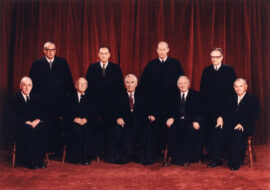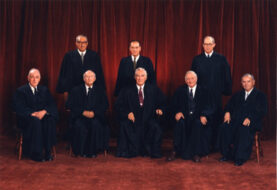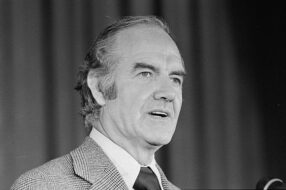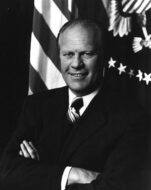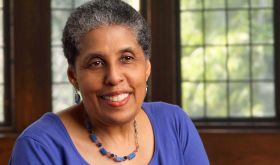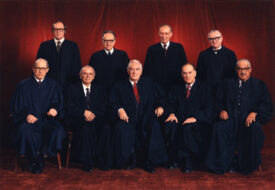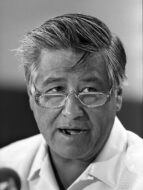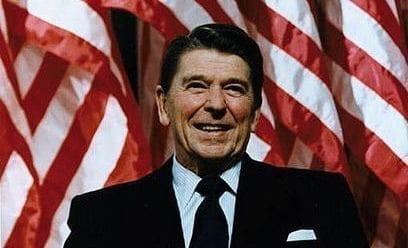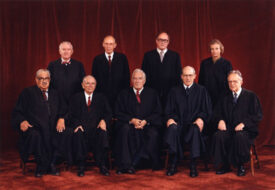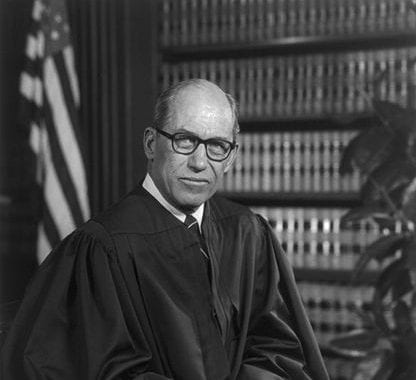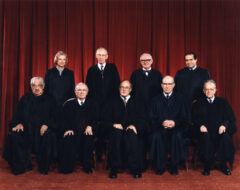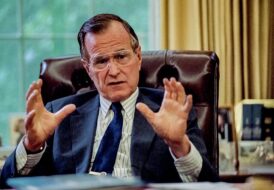

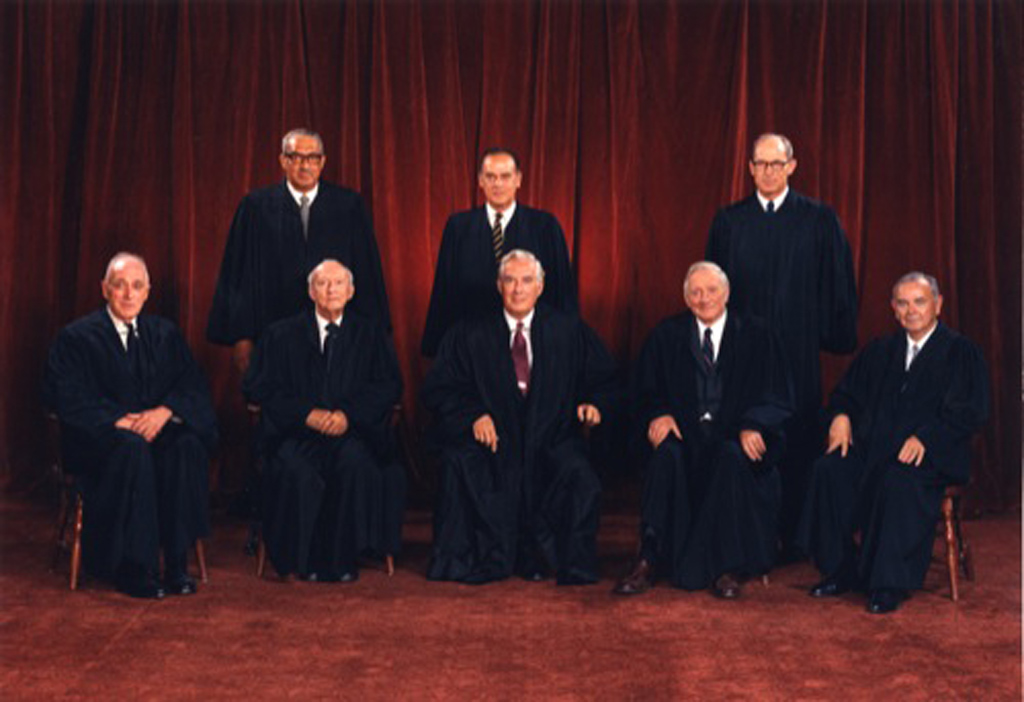
Introduction
After attending a protest on the Vietnam War with their parents in 1965, a group of students decided to express their views in school by wearing black armbands emblazoned with a peace symbol. The school board heard about the protest and, before it took place, banned the wearing of the armbands. When they defied this policy, Marybeth Tinker, her brother John, and their friend John Eckhardt were suspended. The Tinkers sued, claiming that the ban amounted to an unconstitutional “prior restraint,” and were represented by the local ACLU affiliate.
Tinker is an important precedent that extended symbolic speech to the educational setting. Justice Fortas reasoned: “It can hardly be argued that either students or teachers shed their constitutional rights to freedom of speech or expression at the schoolhouse gate. . . . In our system, state-operated schools may not be enclaves of totalitarianism.” Fortas’ opinion hinged on the salient fact that the Tinkers’ symbolic speech involved a peaceful and passive demonstration. Citing the precedent of Burnside v. Byars, he found that the armbands did not “materially and substantially interfere with the requirements of appropriate discipline in the operation of the school.” In a stinging dissent, Justice Hugo Black (1886–1971) characterized the facts quite differently. He noted that a math teacher’s lesson was “practically ‘wrecked’ ” because of the disruption caused by Marybeth’s armband protest. Moreover, Black argued that the Court’s judicial activism in Tinker usurped the authority of local school boards and undermined school discipline. Although Tinker is still on the books, it has been narrowed by subsequent opinions involving speech in the educational setting such as Bethel v. Fraser and Morse v. Frederick.
It is worth noting that although Justice Black was renowned as a First Amendment absolutist who opposed any restriction on speech, he interpreted “speech” quite literally as spoken or written words. He was therefore unwilling to extend the same kind of absolute protection to “symbolic” expression that did not involve written or spoken words. He also regarded the education setting as inappropriate for the same First Amendment protection as other public settings.
Source: 393 U.S. 503, https://www.law.cornell.edu/supremecourt/text/393/503.
JUSTICE FORTAS delivered the opinion of the Court.
The district court recognized that the wearing of an armband for the purpose of expressing certain views is the type of symbolic act that is within the free speech clause of the First Amendment. See West Virginia v. Barnette (1943), Stromberg v. California (1931), Thornhill v. Alabama (1940), Edwards v. South Carolina (1963), Brown v. Louisiana (1966). As we shall discuss, the wearing of armbands in the circumstances of this case was entirely divorced from actually or potentially disruptive conduct by those participating in it. It was closely akin to "pure speech" which, we have repeatedly held, is entitled to comprehensive protection under the First Amendment (Cox v. Louisiana, 1965); Adderley v. Florida, 1966).
First Amendment rights, applied in light of the special characteristics of the school environment, are available to teachers and students. It can hardly be argued that either students or teachers shed their constitutional rights to freedom of speech or expression at the schoolhouse gate. . . .
In West Virginia v. Barnette, this Court held that, under the First Amendment, the student in public school may not be compelled to salute the flag. Speaking through Mr. Justice Jackson, the Court said:
The Fourteenth Amendment, as now applied to the states, protects the citizen against the state itself and all of its creatures—boards of education not excepted. These have, of course, important, delicate, and highly discretionary functions, but none that they may not perform within the limits of the Bill of Rights. That they are educating the young for citizenship is reason for scrupulous protection of constitutional freedoms of the individual, if we are not to strangle the free mind at its source and teach youth to discount important principles of our government as mere platitudes.
On the other hand, the Court has repeatedly emphasized the need for affirming the comprehensive authority of the states and of school officials, consistent with fundamental constitutional safeguards, to prescribe and control conduct in the schools. Our problem lies in the area where students in the exercise of First Amendment rights collide with the rules of the school authorities. . . .
[In this case,] the school officials banned and sought to punish petitioners for a silent, passive expression of opinion, unaccompanied by any disorder or disturbance on the part of petitioners. There is here no evidence whatever of petitioners' interference, actual or nascent, with the schools' work or of collision with the rights of other students to be secure and to be let alone. Accordingly, this case does not concern speech or action that intrudes upon the work of the schools or the rights of other students.
Only a few of the 18,000 students in the school system wore the black armbands. Only five students were suspended for wearing them. There is no indication that the work of the schools or any class was disrupted. Outside the classrooms, a few students made hostile remarks to the children wearing armbands, but there were no threats or acts of violence on school premises.
The district court concluded that the action of the school authorities was reasonable because it was based upon their fear of a disturbance from the wearing of the armbands. But, in our system, undifferentiated fear or apprehension of disturbance is not enough to overcome the right to freedom of expression. Any departure from absolute regimentation may cause trouble. Any variation from the majority's opinion may inspire fear. Any word spoken, in class, in the lunchroom, or on the campus, that deviates from the views of another person may start an argument or cause a disturbance. But our Constitution says we must take this risk (Terminiello v. Chicago, 1949), and our history says that it is this sort of hazardous freedom—this kind of openness—that is the basis of our national strength and of the independence and vigor of Americans who grow up and live in this relatively permissive, often disputatious, society.
In order for the state in the person of school officials to justify prohibition of a particular expression of opinion, it must be able to show that its action was caused by something more than a mere desire to avoid the discomfort and unpleasantness that always accompany an unpopular viewpoint. Certainly where there is no finding and no showing that engaging in the forbidden conduct would "materially and substantially interfere with the requirements of appropriate discipline in the operation of the school," the prohibition cannot be sustained (Burnside v. Byars, 1966).
In the present case, the District Court made no such finding, and our independent examination of the record fails to yield evidence that the school authorities had reason to anticipate that the wearing of the armbands would substantially interfere with the work of the school or impinge upon the rights of other students. Even an official memorandum prepared after the suspension that listed the reasons for the ban on wearing the armbands made no reference to the anticipation of such disruption.
On the contrary, the action of the school authorities appears to have been based upon an urgent wish to avoid the controversy which might result from the expression, even by the silent symbol of armbands, of opposition to this nation's part in the conflagration in Vietnam. It is revealing, in this respect, that the meeting at which the school principals decided to issue the contested regulation was called in response to a student's statement to the journalism teacher in one of the schools that he wanted to write an article on Vietnam and have it published in the school paper.
It is also relevant that the school authorities did not purport to prohibit the wearing of all symbols of political or controversial significance. The record shows that students in some of the schools wore buttons relating to national political campaigns, and some even wore the Iron Cross, traditionally a symbol of Nazism. The order prohibiting the wearing of armbands did not extend to these. Instead, a particular symbol—black armbands worn to exhibit opposition to this nation's involvement in Vietnam—was singled out for prohibition. Clearly, the prohibition of expression of one particular opinion, at least without evidence that it is necessary to avoid material and substantial interference with schoolwork or discipline, is not constitutionally permissible.
In our system, state-operated schools may not be enclaves of totalitarianism. School officials do not possess absolute authority over their students. Students in school, as well as out of school, are "persons" under our Constitution. They are possessed of fundamental rights which the state must respect, just as they themselves must respect their obligations to the state. In our system, students may not be regarded as closed-circuit recipients of only that which the state chooses to communicate. They may not be confined to the expression of those sentiments that are officially approved. In the absence of a specific showing of constitutionally valid reasons to regulate their speech, students are entitled to freedom of expression of their views. . . .
In Meyer v. Nebraska, Mr. Justice McReynolds expressed this nation's repudiation of the principle that a state might so conduct its schools as to "foster a homogeneous people." He said:
In order to submerge the individual and develop ideal citizens, Sparta assembled the males at seven into barracks and entrusted their subsequent education and training to official guardians. Although such measures have been deliberately approved by men of great genius, their ideas touching the relation between individual and state were wholly different from those upon which our institutions rest; and it hardly will be affirmed that any legislature could impose such restrictions upon the people of a state without doing violence to both letter and spirit of the Constitution. . . .
The principle of these cases is not confined to the supervised and ordained discussion which takes place in the classroom. The principal use to which the schools are dedicated is to accommodate students during prescribed hours for the purpose of certain types of activities. Among those activities is personal intercommunication among the students. This is not only an inevitable part of the process of attending school; it is also an important part of the educational process. A student's rights, therefore, do not embrace merely the classroom hours. When he is in the cafeteria, or on the playing field, or on the campus during the authorized hours, he may express his opinions, even on controversial subjects like the conflict in Vietnam, if he does so without "materially and substantially interfer[ing] with the requirements of appropriate discipline in the operation of the school" and without colliding with the rights of others (Burnside v. Byars). But conduct by the student, in class or out of it, which for any reason—whether it stems from time, place, or type of behavior—materially disrupts classwork or involves substantial disorder or invasion of the rights of others is, of course, not immunized by the constitutional guarantee of freedom of speech.
Under our Constitution, free speech is not a right that is given only to be so circumscribed that it exists in principle, but not in fact. Freedom of expression would not truly exist if the right could be exercised only in an area that a benevolent government has provided as a safe haven for crackpots. The Constitution says that Congress (and the states) may not abridge the right to free speech. This provision means what it says. We properly read it to permit reasonable regulation of speech-connected activities in carefully restricted circumstances. But we do not confine the permissible exercise of First Amendment rights to a telephone booth or the four corners of a pamphlet, or to supervised and ordained discussion in a school classroom. . . .
As we have discussed, the record does not demonstrate any facts which might reasonably have led school authorities to forecast substantial disruption of or material interference with school activities, and no disturbances or disorders on the school premises in fact occurred. These petitioners merely went about their ordained rounds in school. Their deviation consisted only in wearing on their sleeve a band of black cloth, not more than two inches wide. They wore it to exhibit their disapproval of the Vietnam hostilities and their advocacy of a truce, to make their views known, and, by their example, to influence others to adopt them. They neither interrupted school activities nor sought to intrude in the school affairs or the lives of others. They caused discussion outside of the classrooms, but no interference with work and no disorder. In the circumstances, our Constitution does not permit officials of the state to deny their form of expression.
We express no opinion as to the form of relief which should be granted, this being a matter for the lower courts to determine. We reverse and remand for further proceedings consistent with this opinion.
Reversed and remanded.
JUSTICE STEWART, concurring.
Although I agree with much of what is said in the Court's opinion, and with its judgment in this case, I cannot share the Court's uncritical assumption that, school discipline aside, the First Amendment rights of children are coextensive with those of adults. . . .
JUSTICE BLACK, dissenting.
The Court's holding in this case ushers in what I deem to be an entirely new era in which the power to control pupils by the elected "officials of state-supported public schools . . ." in the United States is in ultimate effect transferred to the Supreme Court. The Court brought this particular case here on a petition for certiorari[1] urging that the First and Fourteenth Amendments protect the right of school pupils to express their political views all the way "from kindergarten through high school." Here, the constitutional right to "political expression" asserted was a right to wear black armbands during school hours and at classes in order to demonstrate to the other students that the petitioners were mourning because of the death of United States soldiers in Vietnam and to protest that war which they were against. Ordered to refrain from wearing the armbands in school by the elected school officials and the teachers vested with state authority to do so, apparently only 7 out of the school system's 18,000 pupils deliberately refused to obey the order. . . .
As I read the Court's opinion, it relies upon the following grounds for holding unconstitutional the judgment of the Des Moines school officials and the two courts below. First, the Court concludes that the wearing of armbands is "symbolic speech," which is "akin to pure speech,'" and therefore protected by the First and Fourteenth Amendments. Secondly, the Court decides that the public schools are an appropriate place to exercise "symbolic speech" as long as normal school functions are not "unreasonably" disrupted. Finally, the Court arrogates to itself, rather than to the state's elected officials charged with running the schools, the decision as to which school disciplinary regulations are "reasonable."
Assuming that the Court is correct in holding that the conduct of wearing armbands for the purpose of conveying political ideas is protected by the First Amendment, cf., e.g., Giboney v. Empire Storage & Ice Co., 336 U. S. 490 (1949), the crucial remaining questions are whether students and teachers may use the schools at their whim as a platform for the exercise of free speech—"symbolic" or "pure"—and whether the courts will allocate to themselves the function of deciding how the pupils' school day will be spent. While I have always believed that, under the First and Fourteenth Amendments, neither the state nor the federal government has any authority to regulate or censor the content of speech, I have never believed that any person has a right to give speeches or engage in demonstrations where he pleases and when he pleases. This Court has already rejected such a notion. In Cox v. Louisiana (1965), for example, the Court clearly stated that the rights of free speech and assembly "do not mean that everyone with opinions or beliefs to express may address a group at any public place and at any time."
While the record does not show that any of these armband students shouted, used profane language, or were violent in any manner, detailed testimony by some of them shows their armbands caused comments, warnings by other students, the poking of fun at them, and a warning by an older football player that other nonprotesting students had better let them alone. There is also evidence that a teacher of mathematics had his lesson period practically "wrecked," chiefly by disputes with Mary Beth Tinker, who wore her armband for her "demonstration."
Even a casual reading of the record shows that this armband did divert students' minds from their regular lessons, and that talk, comments, etc., made John Tinker "self-conscious" in attending school with his armband. While the absence of obscene remarks or boisterous and loud disorder perhaps justifies the Court's statement that the few armband students did not actually "disrupt" the classwork, I think the record overwhelmingly shows that the armbands did exactly what the elected school officials and principals foresaw they would, that is, took the students' minds off their classwork and diverted them to thoughts about the highly emotional subject of the Vietnam War. And I repeat that, if the time has come when pupils of state-supported schools, kindergartens, grammar schools, or high schools can defy and flout orders of school officials to keep their minds on their own schoolwork, it is the beginning of a new revolutionary era of permissiveness in this country fostered by the judiciary. The next logical step, it appears to me, would be to hold unconstitutional laws that bar pupils under twenty-one or eighteen from voting, or from being elected members of the boards of education. . . .
Change has been said to be truly the law of life, but sometimes the old and the tried and true are worth holding. The schools of this nation have undoubtedly contributed to giving us tranquility and to making us a more law-abiding people. Uncontrolled and uncontrollable liberty is an enemy to domestic peace. We cannot close our eyes to the fact that some of the country's greatest problems are crimes committed by the youth, too many of school age. School discipline, like parental discipline, is an integral and important part of training our children to be good citizens—to be better citizens. Here a very small number of students have crisply and summarily refused to obey a school order designed to give pupils who want to learn the opportunity to do so. One does not need to be a prophet or the son of a prophet to know that, after the Court's holding today, some students in Iowa schools—and, indeed, in all schools—will be ready, able, and willing to defy their teachers on practically all orders. This is the more unfortunate for the schools since groups of students all over the land are already running loose, conducting break-ins, sit-ins, lie-ins, and smash-ins. Many of these student groups, as is all too familiar to all who read the newspapers and watch the television news programs, have already engaged in rioting, property seizures, and destruction. They have picketed schools to force students not to cross their picket lines, and have too often violently attacked earnest but frightened students who wanted an education that the pickets did not want them to get. Students engaged in such activities are apparently confident that they know far more about how to operate public school systems than do their parents, teachers, and elected school officials. It is no answer to say that the particular students here have not yet reached such high points in their demands to attend classes in order to exercise their political pressures. Turned loose with lawsuits for damages and injunctions against their teachers as they are here, it is nothing but wishful thinking to imagine that young, immature students will not soon believe it is their right to control the schools, rather than the right of the states that collect the taxes to hire the teachers for the benefit of the pupils. This case, therefore, wholly without constitutional reasons, in my judgment, subjects all the public schools in the country to the whims and caprices of their loudest-mouthed, but maybe not their brightest, students. I, for one, am not fully persuaded that school pupils are wise enough, even with this Court's expert help from Washington, to run the 23,390 public school systems in our 50 states. I wish, therefore, wholly to disclaim any purpose on my part to hold that the federal Constitution compels the teachers, parents, and elected school officials to surrender control of the American public school system to public school students. I dissent.
- 1. A Latin word meaning “to be informed” or “we wish to be informed,” certiorari is an order of a higher court to review a lower court decision. “Certiorari” was the first word of such orders when they were written in Latin.
Voluntary Segregation—A Disaster
March 31, 1969
Conversation-based seminars for collegial PD, one-day and multi-day seminars, graduate credit seminars (MA degree), online and in-person.

